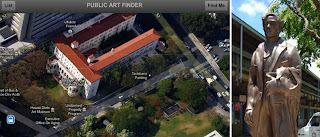Iolani Palace, 5-6:30 pm.
Tom Klobe
Exhibitions: Concepts, Planning and Design.

Tom Klobe will discuss the subjects of his new book Exhibitions: Concept, Planning and Design, published by the AAM Press of the American Association of Museums, provides advice on the art of exhibition planning and explores how significant ideas are communicated to museum visitors through exhibit design. The book includes chapters on concept development and interpretation with 50 in-depth, fully illustrated case studies of exhibitions he produced in Hawai'i.
Tom Klobe is Emeritus Professor of Art and former director of the University of Hawaii Art Gallery (1977-2006). In 2005, he was recognized as one of six "Living Treasures" in Hawaii by the Honpa Hongwanji Mission. He is the recipient of the Robert W. Clopton Award for Distinguished Community Service and the Chevalier de l'Older des Arts et des Lettres, Republic of France. In May 2006, Mr. Klobe retired from his long career as a respected teacher and gallery director.
Tom Klobe is Emeritus Professor of Art and former director of the University of Hawaii Art Gallery (1977-2006). In 2005, he was recognized as one of six "Living Treasures" in Hawaii by the Honpa Hongwanji Mission. He is the recipient of the Robert W. Clopton Award for Distinguished Community Service and the Chevalier de l'Older des Arts et des Lettres, Republic of France. In May 2006, Mr. Klobe retired from his long career as a respected teacher and gallery director.
Click here to RSVP! $5 non-members.



